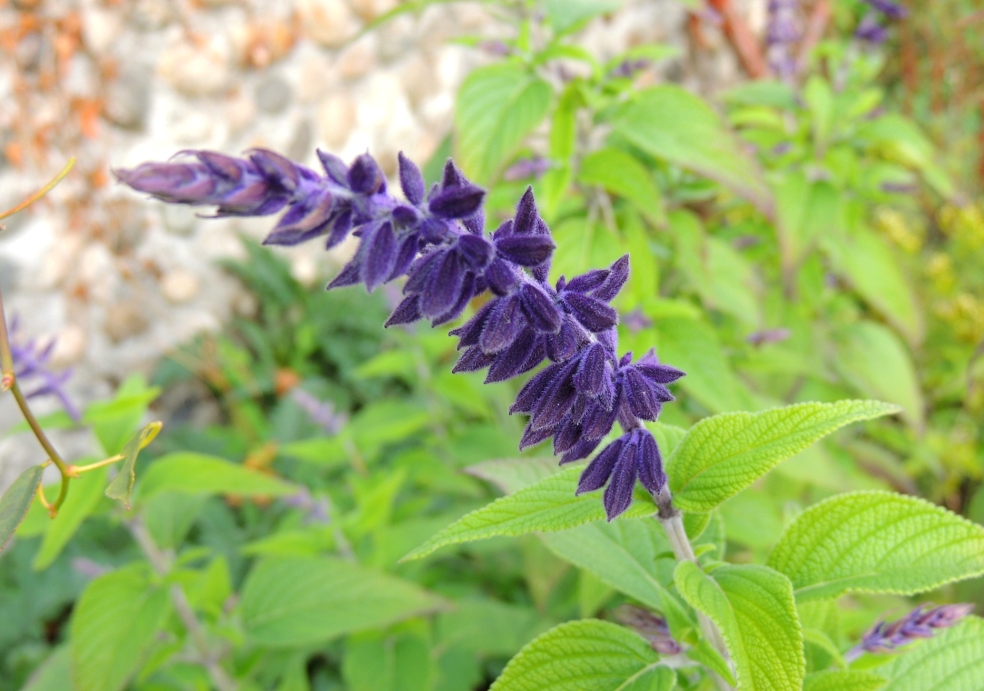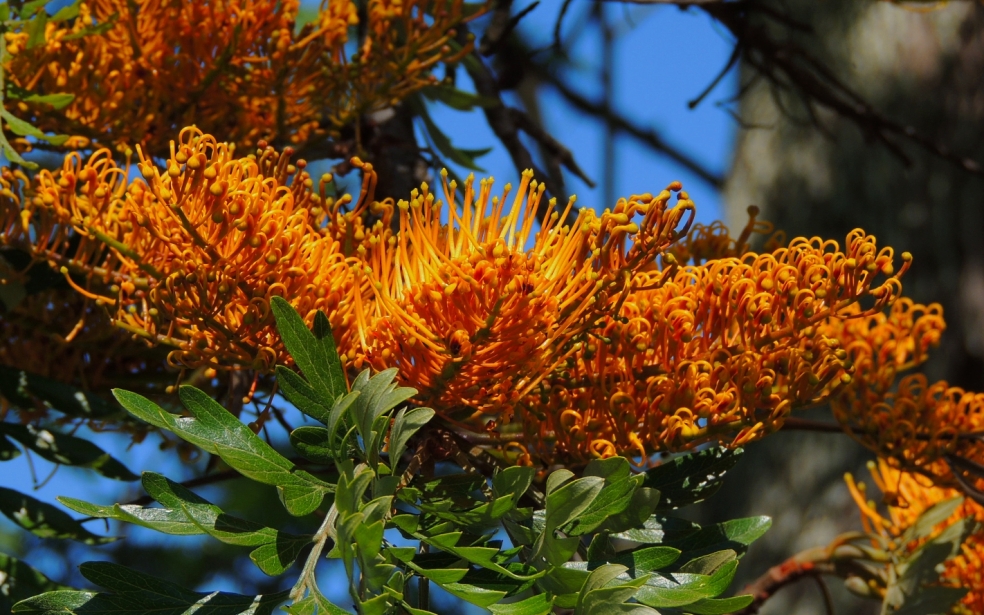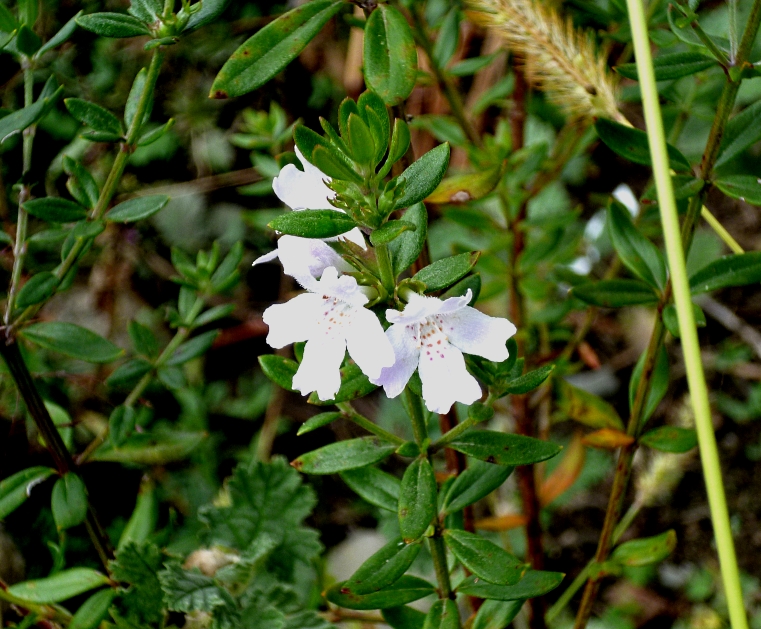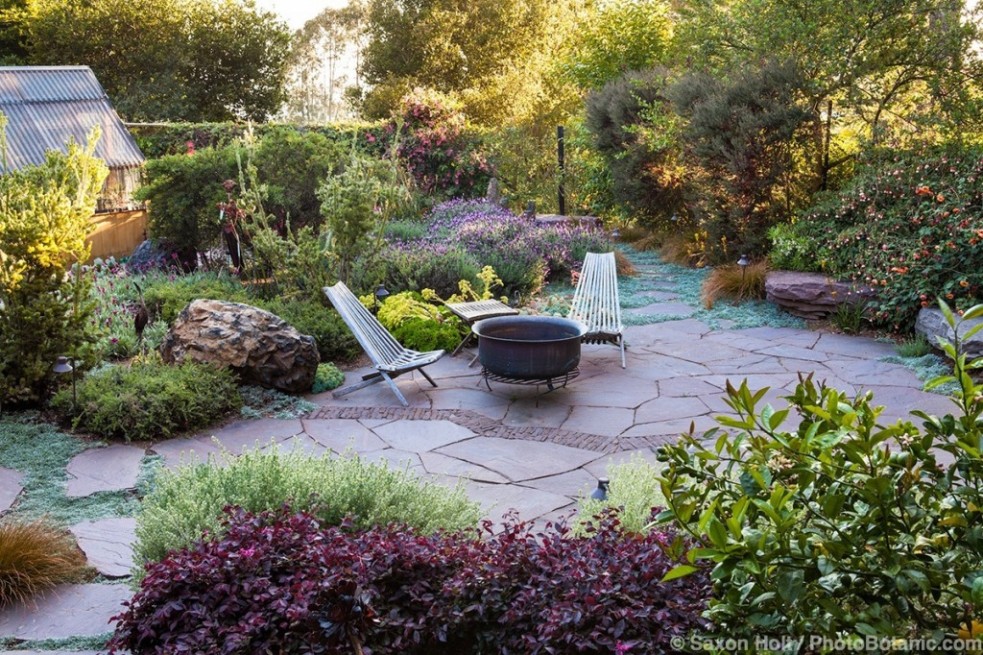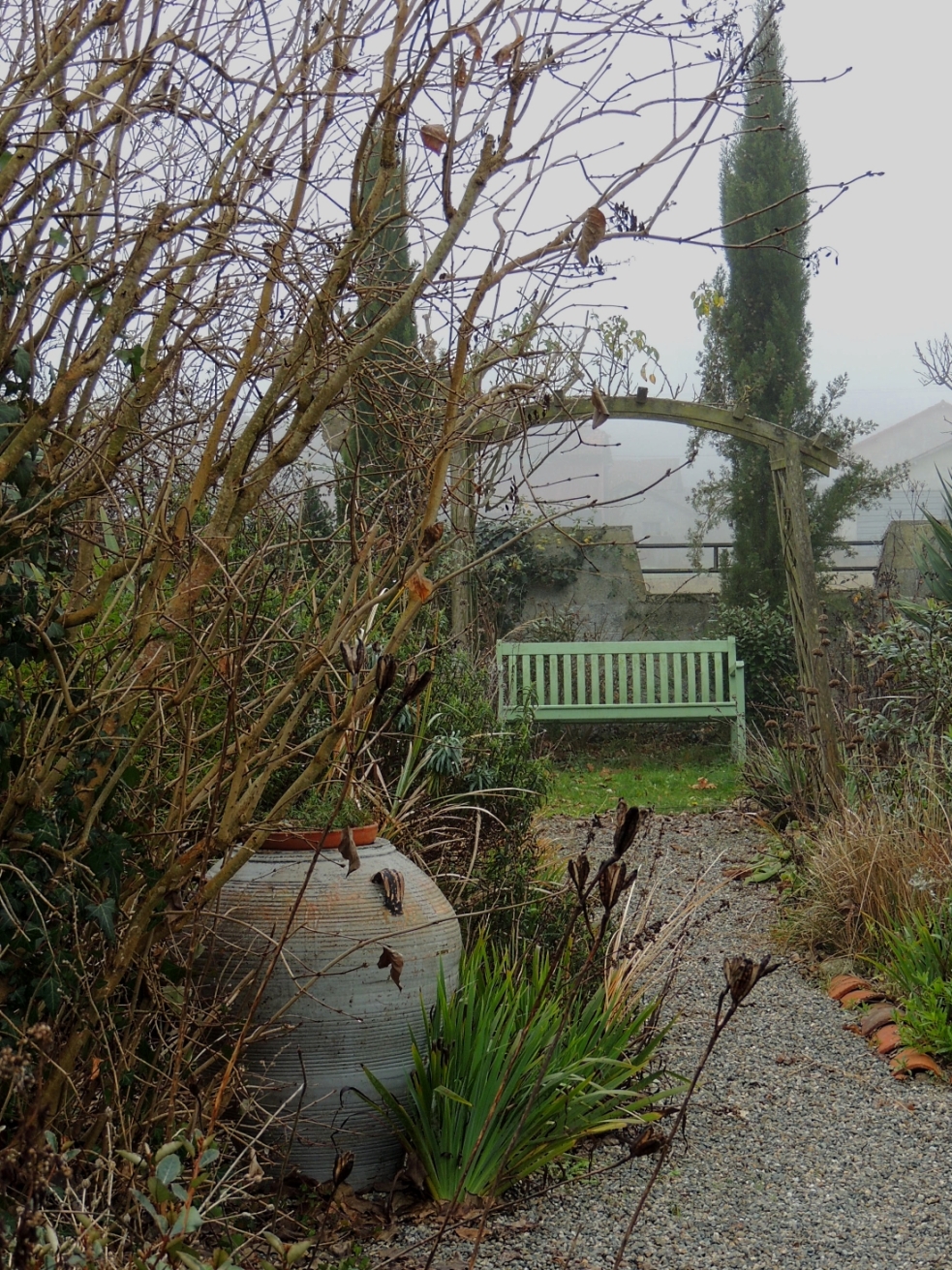
I love a New Year. All that fresh thinking, new ideas, new plants to try out, new projects simmering is one big energy rush. But today rather let me down- we have been surrounded by fog for the last 3 days, not unusual in the winter as we are in a river valley- but winter has suddenly turned up and is making a rather glum job of it. Having decided to risk some more on-the-tender-side things in the garden since we came back from Australia, I rushed out this afternoon with fleece and secateurs, cutting back luxurious growth and fleecing the riskier items. I have a feeling that they will be just fine, and I was sad to cut back Salvia ‘Anthony Parker’ which has been magnificent since October probably, though we missed a large slice of it.

But he is a Californian, and so it was too much to expect that the show could go on- but I am hoping that staying in the ground might get him off to an earlier start this year.

I am leaving Salvia ‘Amistad’ a bit longer as it is a good deal more tough than ‘Anthony Parker’.
These are isolated moments of flowering I hasten to add- 90% of the garden is looking brown and winter-worn, but the star of the moment is a real surprise. I bought a rather spindly, much reduced specimen of Cestrum elegans rubrum last winter, and put it just underneath the great over-hang of the pine tree with a wall behind it for some warmth- figuring that the over-hang will give it some frost protection as it is not that robust. But right now, it is covered with flowerheads, and looks really good from the foliage point of view.
Of course, this does reflect the warm temperatures we have been having, from 9-19C in the last month during the day, so we will see. I don’t think it is a great looker from the foliage end of things, but the flowerheads are big, carmine, and long-lasting- very exotic-looking.

I have a bit of a thing about Abutilons. Some might find them a bit rangy and straggly, I don’t, but I know what the decriers mean. But I love the way that the flowering stems swag, and this year I mean to do more to give them support that will show them off better. This unknown orange abutilon is more bushy than most and so gives a solid, but not dull, presence in a sunny, hot spot. It is still covered with flowerheads.
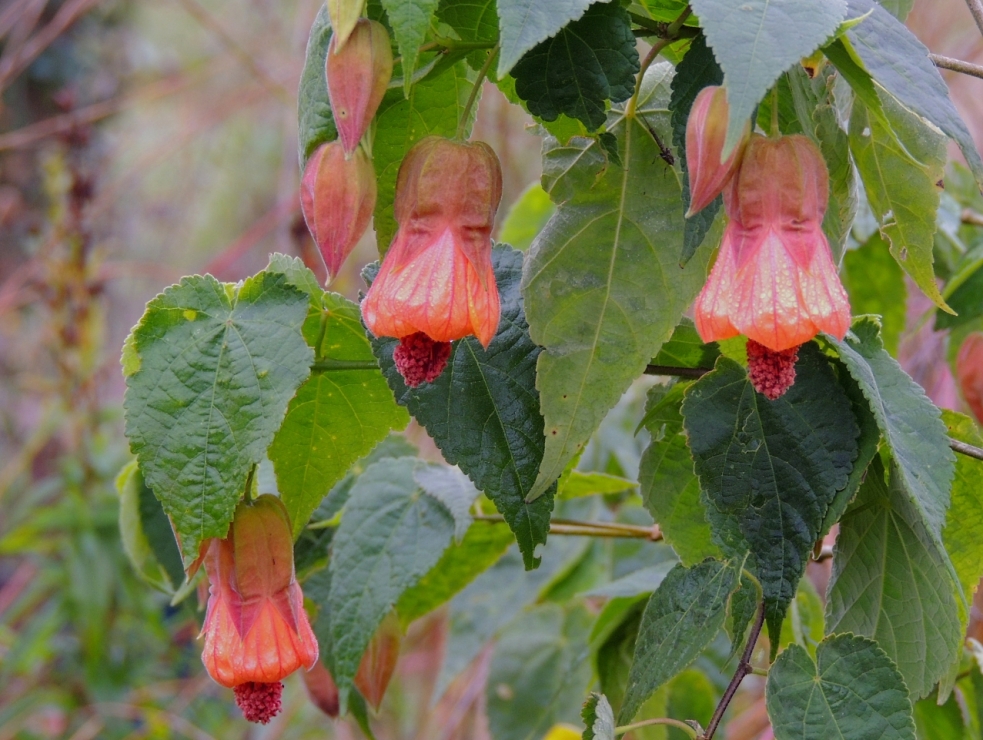
There are more isolated flowerheads on Abutilon ‘Kentish Belle’ which is much more of a straggler. But the flowerheads are like threads of party lanterns- and the bright yellow combined with the dark fuchsia pink is very pretty. I need to get some more rebar to bend into supports for it this year. And new to me last year was Abutilon ‘Red Trumpet’ which has produced a new flowerhead despite the fog. It looks to me as if this variety will be more bushy in form.


So, with cuttings to settle in from ‘Anthony Parker’ and seeds coming in the post, there is plenty to look forward to. Gardening is such a kind activity, it forgives your mistakes and let’s you start over. That is a good thought to face the fog with.


